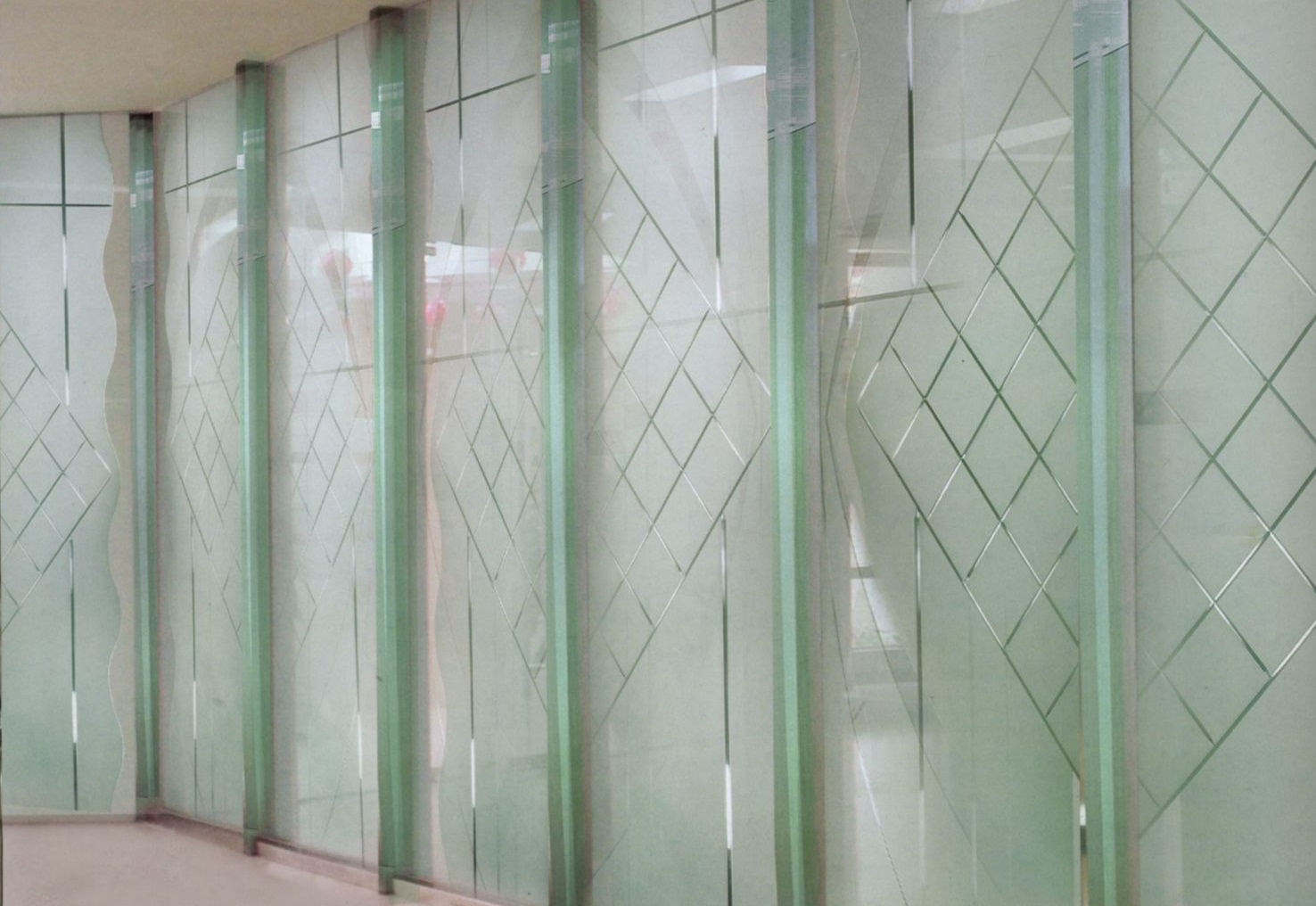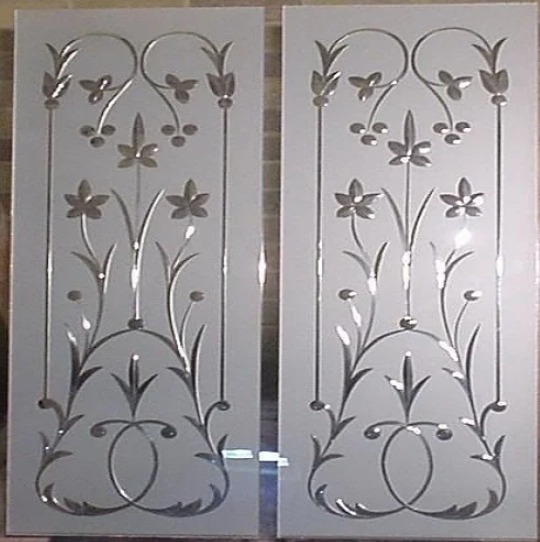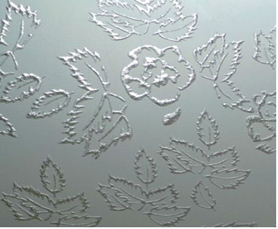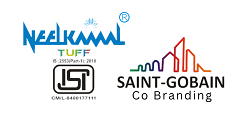
Acid Etching Glass: A Fusion of Elegance and Functionality
Acid etching glass involves the application of acid or chemical compounds onto the surface of glass to create a matte, frosted, or translucent appearance. This process alters the surface of the glass, resulting in a blurred or diffused effect while maintaining light transmission, providing privacy, and diffusing glare. The treatment offers both decorative and functional advantages, making it a preferred choice for architectural applications.
Acid-etching is a specialized glass fabrication process involving the application of hydrofluoric acid to annealed glass sheets or sections to give its surface a frosted look. It can also be used to create specialty designs, such as horizontal and vertical lines, and graphics. Because this process involves various chemical compounds, it’s therefore best to consult an experienced fabricator boasting valued partnerships with acid-etched glass manufacturers.

Origin of Acid-etched Glass
It was during the middle ages, that the process of acid glass-etching was somewhat clouded with controversy, since its acid medium, hydrofluoric acid, was causing a high health risk to the artisans, so much so that the users were known to have been poisoned merely by its fumes. Many accidents happened when the acid made contact with the skin, which in turn would dissolve the tissues.
Key Features and Benefits:
Acid-etching creates various opacity levels, for a wide range of styles and uses. When added to back-painted glass, for example, it boasts a contemporary, classic appearance.
Enhanced Privacy: Acid etched glass maintains transparency while diffusing light, providing privacy by obscuring visibility without compromising on natural light transmission.
Aesthetic Appeal: The frosted or matte appearance of acid etched glass adds an element of elegance, softening harsh light and creating a subdued, inviting ambiance.
Versatility in Design: The treatment process allows for customization in patterns, designs, and levels of translucency, offering architects and designers creative freedom in their projects.
Durability and Maintenance: Acid etched glass surfaces are durable, resistant to fingerprints, and easier to maintain compared to some other decorative glass types.

Applications of Acid Etching Glass:
Interior Partitions: Used in offices, homes, and commercial spaces for partitions, dividers, or doors to create private areas without sacrificing natural light.
Shower Enclosures: In bathrooms, acid etched glass offers privacy in shower enclosures while adding a touch of elegance to the space.
Furniture and Décor: Acid etched glass finds application in tabletops, cabinets, shelving, and decorative accents, enhancing the visual appeal of furniture and décor.
Retail Spaces: Utilized in storefronts and displays, acid etched glass offers an attractive yet subtle option for branding and aesthetics.
Acid etching glass stands as a testament to the union of functionality and beauty in architectural design. Its ability to provide privacy, diffuse light, and enhance aesthetics makes it a versatile choice for various applications, defining spaces with sophistication and practicality.





